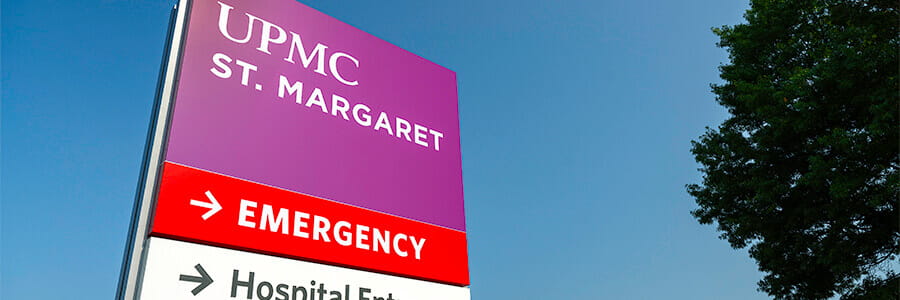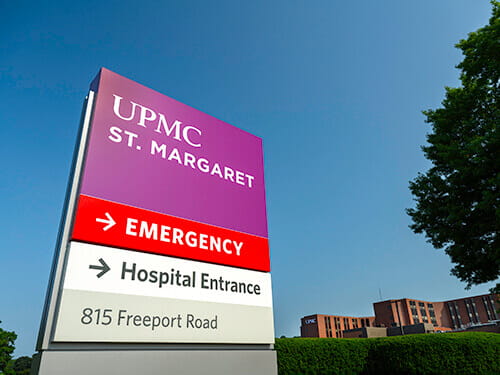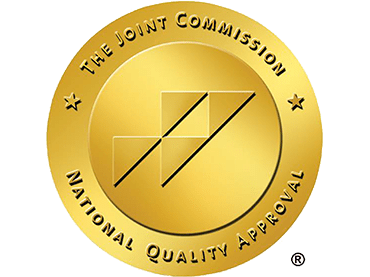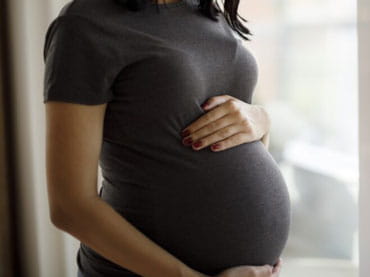For a medical emergency, call 911 or go to the nearest emergency department. For immediate help with a mental health crisis, call 988 for the Suicide & Crisis Lifeline.
When you need care right away, the Emergency Department (ED) team at UPMC St. Margaret is here for you — 24/7. We serve our neighbors in northeastern Allegheny County and the Alle-Kiski Valley region.
No matter what time of day or how complex your illness or injury, our doctors always provide the best possible emergency care.
Our Services
Features of UPMC St. Margaret's ED
Our ED offers state-of-the-art technology and patient and family-friendly features, including:
24 treatment areas
- 8 large critical care treatment areas.
- 16 exam rooms.
- An 8-bed suite for patients waiting for test results or hospital admission.
Each room has a TV.
Spacious waiting room
The waiting room offers a relaxing area for ED patients and family members and allows staff to streamline patient check-in.
When you arrive, a greeter will meet you. ED staff will triage you right away and then take you to a treatment room.
Bedside registration
After we triage you and take you to a treatment room, we will register you from your bedside.
Rooftop heliport
Located on the rooftop canopy above the ED, the heliport provides quick elevator access for medical transport.
Decontamination area
The ED at UPMC St. Margaret has its own air handling system, which protects the rest of the hospital from possible contagions.
The decontamination area:
- Features its own outside entrance, air exhaust, and water drainage systems.
- Received funding through a $1.6 million federal grant from the U.S. Department of Health and Human Services Office of Emergency Preparedness.
Private family rooms
We have 2 private rooms for patients and their loved ones to discuss sensitive details of care with a doctor.





















